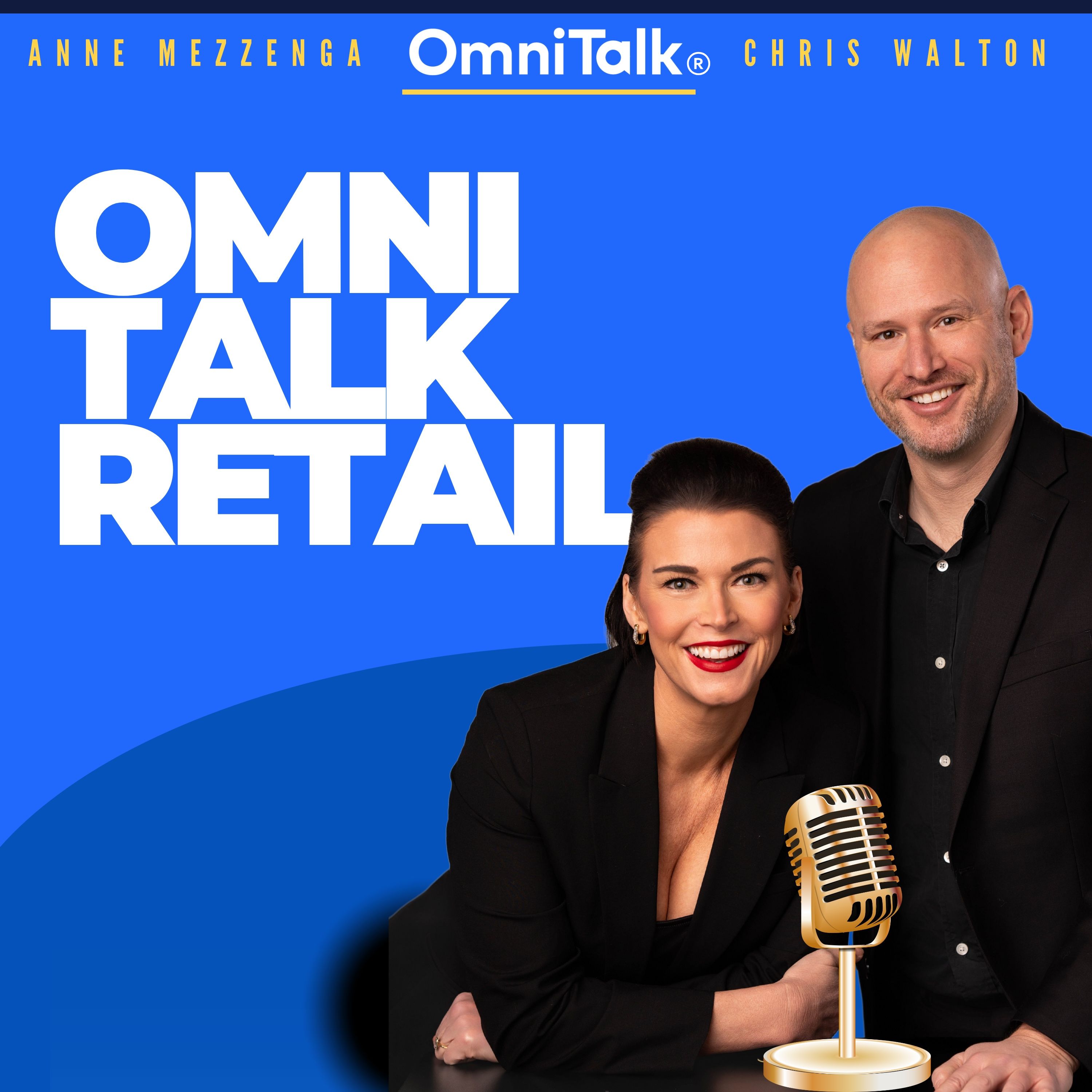DoorDash Teams Up with Waymo - Are Autonomous Deliveries the Future? | Fast Five Shorts
DoorDash is piloting autonomous deliveries with Waymo in Metro Phoenix—but will consumers actually embrace robot deliveries? Sponsored by the A&M Consumer and Retail Group, Mirakl, Ocampo Capital, Infios, and Quorso.
Lisa Collier is skeptical: "If I'm paying for delivery, I want it handed to me." Manola Soler shares hilarious experiences with delivery robots in Jersey City that couldn't navigate stairs and blocked sidewalks. The panel debates whether this works better in suburban vs. urban environments, the logistics of restaurant employees running orders to vehicles, and whether lower delivery fees would make consumers accept the trade-off.
Chris Walton points out this might succeed in suburban America first, where last-mile costs are higher and homes have driveways—not apartment buildings with elevators.
🔔 Subscribe for delivery and retail tech insights!
For the full episode head here
#doorDash #waymo #autonomousdelivery #selfdriving #retailtech #lastmiledelivery #phoenix #deliveryinnovation
This podcast uses the following third-party services for analysis:
Podcorn - https://podcorn.com/privacy
Transcript
DoorDash is teaming up with Waymo in its latest autonomous delivery pilot.
Speaker A:The global on demand delivery platform is piloting an autonomous delivery service in the Metro Phoenix area with Waymo, the Google self driving vehicle subsidiary.
Speaker A: mercial applications later in: Speaker A:DoorDash customers in the area may be matched with a fully autonomous Waymo vehicle for deliveries from participating retailers.
Speaker A:The service will begin with deliveries from Dashmar, Doordash's owned and operated convenience grocery and retail store, with plans to expand over time.
Speaker A:Lisa, back to you here.
Speaker A:Do you think autonomous deliveries from DoorDash via Waymo or other autonomous modes of transportation will eventually catch on?
Speaker B:My first reaction is no, because if I'm paying to have it delivered, I.
Speaker A:Want it handed to me.
Speaker C:Oh, okay, interesting.
Speaker B:You know, like, if I'm going that mile to say I'm going to pay for a delivery, I want you to hand it to me reliably.
Speaker B:I don't want to get outside and go down to the.
Speaker B:To the vehicle and pick it up.
Speaker B:That was.
Speaker B:That was my first reaction, right?
Speaker C:It doesn't work in New York.
Speaker B:No, that was my first reaction.
Speaker B:I'm going to stick with that guy.
Speaker A:What if it was slightly less expensive?
Speaker A:What if Instead of a $10 delivery fee, it was $5 because you had to go down to do it?
Speaker A:Would that motivate you, Lisa?
Speaker B:Might motivate me.
Speaker C:Okay, okay.
Speaker C:Okay.
Speaker A:I mean, that couch is comfy and you're all like.
Speaker A:Like, it's very nice to not have to leave the confines of your apartment 100%.
Speaker B:I mean, the other thing is, I think about this because sometimes I could just.
Speaker B:My children that are now young adults, I'm like, My daughter had a rude awakening when she looked at her bills because of how much she had delivered.
Speaker B:You gotta wake up and get.
Speaker B:If you're gonna get off the couch, you might as well go to the location.
Speaker B:When you get off the couch, it's gonna walk down the front door and still pay for delivery.
Speaker A:Right.
Speaker A:Manolo, how do you feel about this?
Speaker A:Do you think that deliveries via autonomous vehicles will take off?
Speaker D:You know, I think there's a lot of ifs and buts, right?
Speaker D:There's a lot of exceptions where it just doesn't.
Speaker D:You live in an apartment building and you have to get in the elevator.
Speaker D:It's a mess.
Speaker D:I think it has to be opt in.
Speaker D:Right?
Speaker D:You can't be just like.
Speaker D:Like, oh, now you're assigned.
Speaker D:I had an experience and I live in Jersey City.
Speaker D:And we don't have.
Speaker D:It's not Waymo, but it's these little.
Speaker D:I don't know, the brand of them.
Speaker D:They're.
Speaker D:They look like coolers and they're rolling around and.
Speaker C:They do.
Speaker A:Yeah.
Speaker D:UberEats delivery, and I had one delivered to me for the first time and it can't get up the steps.
Speaker D:Right.
Speaker D:So then as you sat in the sidewalk kind of sadly waiting for me, and then I went and got everything out and then even after I took stuff out, it was still on the sidewalk, kind of like, I guess there's a lag.
Speaker D:And it was blocking the sidewalk for a really long time.
Speaker D:And I was like, well, you know, a person would have been in and out, you know.
Speaker D:Yeah, no, it feels.
Speaker D:It's a place where, I don't.
Speaker D:I don't know that we need the technology put in that particular use.
Speaker D:But yeah, I don't know.
Speaker D:Some of the robots are cute, I'll give them that, you know.
Speaker A:Yes, for sure.
Speaker A:Cute.
Speaker A:I know.
Speaker A:That was my question too.
Speaker A:Like, the door dash element makes sense because it's like, it's not hot and ready food, but, like, if you start to introduce hot and ready food, like, are there 15 Waymos in the parking lot, like, just waiting?
Speaker A:Like, how do you as a food service provider know, like, which waymo is this going to?
Speaker A:And you know, like that.
Speaker A:That part seems like that's logistically going to be hard to tackle from just, you know, being at doordash, pulling up to their.
Speaker A:Their warehouse and, you know, filling the cars and going.
Speaker A:But Chris, I know you're a big fan of Waymo, you've tried it in Phoenix from a, like bringing you place to place.
Speaker A:But where do you land on the delivery side of things here?
Speaker C:Yeah.
Speaker C:Lisa brought up a point I hadn't thought about before, which is like the urban versus suburban dynamic.
Speaker C:So I think one of my big takeaways from this is if it happens anywhere, it's going to happen in suburban America before urban America, which also makes sense economically because deliveries.
Speaker C:Delivery is actually more cost efficient in large, dense urban centers.
Speaker C:So where do you actually need this?
Speaker C:You actually need this in suburban America more so to delay, to defray the last mile delivery costs.
Speaker C:So, but with that said, I think what we're seeing here is the evolution of the experiment.
Speaker C:Right.
Speaker C:So, like, it's not surprising me, they're starting with dashmars number one, because a dashmart is a fence, is effectively a warehouse.
Speaker C:So I think if you're doing this from a warehouse or Even a cloud kitchen that makes sense right now.
Speaker C:But if you start doing it for like restaurant delivery, full on restaurant delivery, that becomes problematic because then you have to actually staff or give payroll to like a new job for the restaurant.
Speaker C:Like whose job is it to run the orders out to the Waymo?
Speaker C:You know, which is similar to what Lisa said, like whose job is it to come and get the order from the Waymo?
Speaker C:And so that's, that's going to be expensive and that's gonna be a big hurdle for the restaurants particularly to get over as well as the retailers too.
Speaker C:Cause the retailers have to assign that job as well.
Speaker C:It's also why I just.
Speaker C:It's funny that we're talking about this.
Speaker C:Cause I was at Chick Fil A yesterday and I ordered on their app and I usually do curbside and they were trying to incent me through the mobile drive through lane because.
Speaker C:And it may.
Speaker C:And I was like, why are they doing that?
Speaker C:And it makes sense because they don't have to send the runner out to my car.
Speaker C:I go to them.
Speaker C:And so that.
Speaker C:Those are some of the elements that are at play here.
Speaker C:But, but I think ultimately we could see this because like you said, if you want to opt into it, which I think I kind of would, I kind of would rather have my delivery brought to me than some just random dude who's just possibly working at Doordash for, you know, a couple days, you know, for the first time.
Speaker C:And then it could evolve to the point where maybe it can do more than one delivery at a time.
Speaker C:Can the car be equipped to pick up from various different points and then scale the delivery that way?
Speaker C:So there's a lot of things I like about it.
Speaker C:So I do think it'll eventually come, but yeah, there's still a lot of things we have to figure out.



